J is for Jar Fly. Jar Fly is a colloquial name for Tibicen cicadas.
I don’t know the origin of the term, but I’m guessing it has to do with the fact that kids keep insects in jars.
J is for Jar Fly. Jar Fly is a colloquial name for Tibicen cicadas.
I don’t know the origin of the term, but I’m guessing it has to do with the fact that kids keep insects in jars.
I is for instar. An instar is a developmental phase in the life of an insect. Each instar marks a change in the abilities and characteristics of the insect. Most cicadas go through five instars; the final instar of a cicada’s life is the adult or imago phase.
An imago is an adult, sexually mature insect. Here’s a photo of Magicicada imagoes:
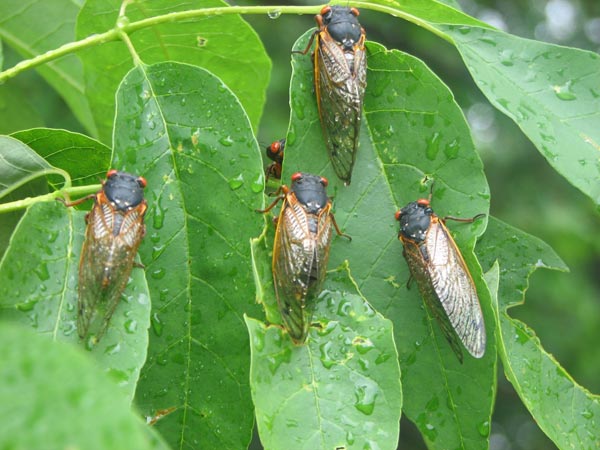
Insectoverdin is the pigment that that makes insects like cicadas green.
Ricky B sent us this sound file of a cicada that he recorded in August of 2010 in Chicago:
Can you guess which species it is?
Hint: try sites like Insect Singers and Songs of Insects sites for ideas.
H is for Hieroglyphic Cicada. The Neocicada hieroglyphica a.k.a. Hieroglyphic Cicada is found in the south-eastern United States. It’s active in the late spring and early summer. There are multiple subspecies of the Hieroglyphic Cicada including the Neocicada hieroglyphica hieroglyphica and Neocicada hieroglyphica johannis, according to InsectSingers.com.
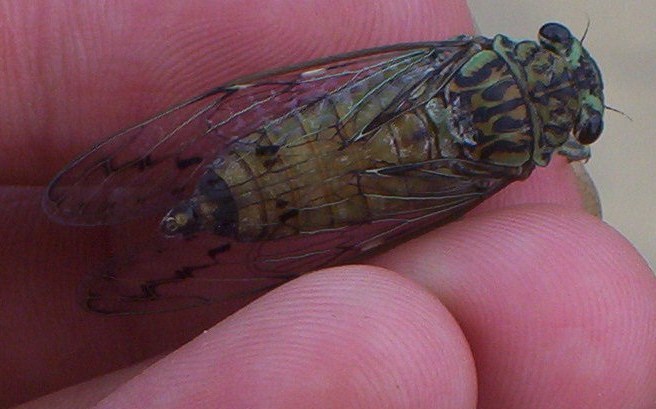
Photo by Matt Berger.
Listen to a Hieroglyphic Cicada:
Neocicada hieroglyphica singing by Joe Green from Cicada Mania on Vimeo.
 (Photo by Huechys sanguinea by =spurdog=, on Flickr).
(Photo by Huechys sanguinea by =spurdog=, on Flickr). G is for Greengrocer. The Greengrocer is the green morph of the Australian cicada Cyclochila australasiae. These cicadas can be found in south-eastern Australia. They have a large pronotal collar, and if you use your imagination, it looks like they’re wearing a tiny Pith helmet above their eyes.
Here’s a close of up of a Greengrocer (from Bron):
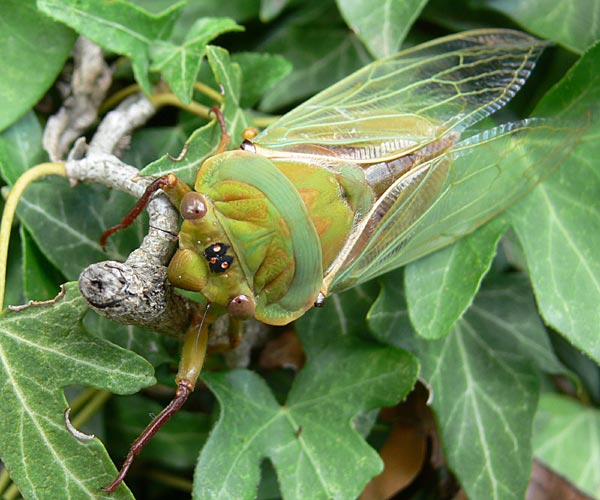
Here’s a box of Greengrocers (from Kevin Lee):
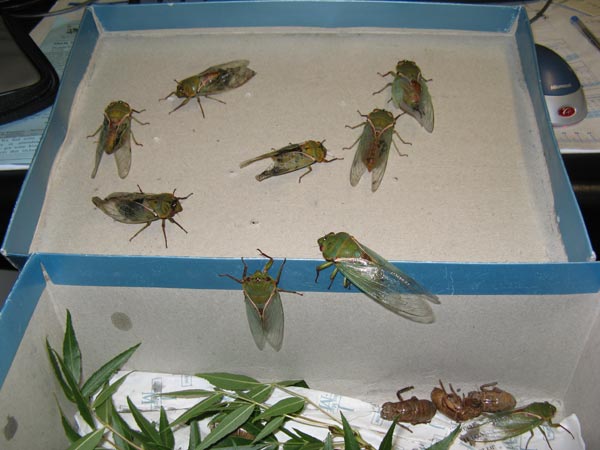
F is for flagging. Flagging is the term for when leaves of a tree die as a result of oviposition (when the cicada lays eggs in the branches of trees).
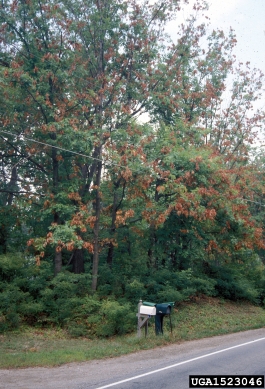
Photo credit: Daniel Herms, The Ohio State University, Bugwood.org (Forestry Images).
The Floury Baker, aka Aleeta curvicosta, is an Australian cicada. It has excellent camouflage, as you can see from the photo:
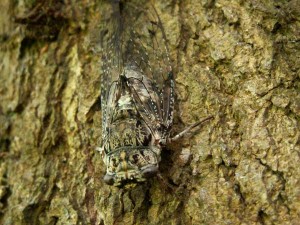
Photo credit: Michelle Thompson.
Fidicina is a Genus of cicadae. Here is a photo of a Fidicina mannifera from Brazil:
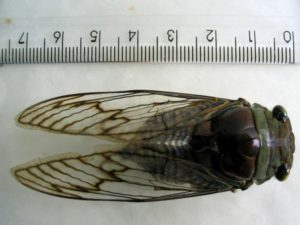
Photo by Leonardo Milhomem.
Formotosena is a Genus of cicada. Here is a photo of a Formotosena montivaga from Thailand:
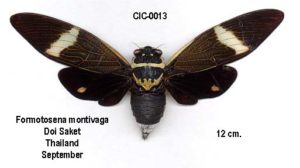
Photo by Michel Chantraine.
Hey,
If you’re interested in North American cicada species, and you’re looking for sound files of those cicada’s songs, check out Insect Singers, a new website from cicada researchers David Marshall and Kathy Hill. It has dozens of audio samples. Awesome!
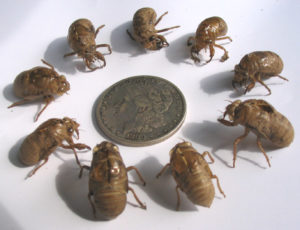
Thanks for Suzanne M for the scan of the Archie McPhee catalog featuring the amazing cicada keychain.
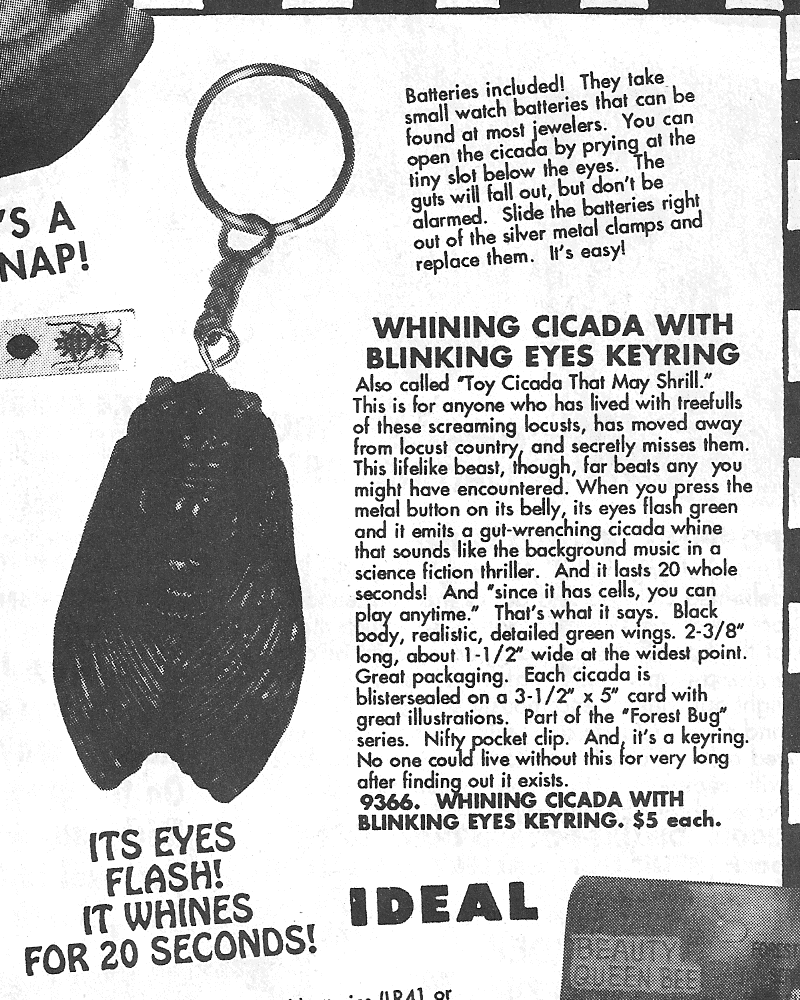
I actually finally found one of these thanks to a family member.
D is for Dog-Day Cicada. The Tibicen canicularis, aka Dog-Day Cicada, is thought to be known as the Dog-Day Cicada because they are most active during the “dog days of summer”, which are the days when the star Sirius is visible in the Northern Hemishphere (July 3-August 11)1. Canicularis is derived from the Latin word canis, which means dog. Tibicen davisi is known as the Southern Dog-Day Cicada. Folks use the term “Dog-Day Cicada” for other species of Tibicen as well, but the T. canicularis the true Dog-Day Cicada.
Image of a N. canicularis (on the left) and N. davisi by Paul Krombholz:

Diceroprocta is a genus of cicadas that exist in North America.
Diemeniana euronotiana is a pretty black, orange and red cicada that exists in south-eastern coastal area of Australia2. See a photo of a Diemeniana euronotiana.
The Double Drummer aka Thopha saccata is an Australian cicada. It exists on the east coast of Australia and prefers eucalyptus trees2. The Double Drummer is a large cicada, as you can see from this photo.
Dundubia is a genus of cicada that exists in Asia. See a photo of a disected Dundbia on Cicada Mania.